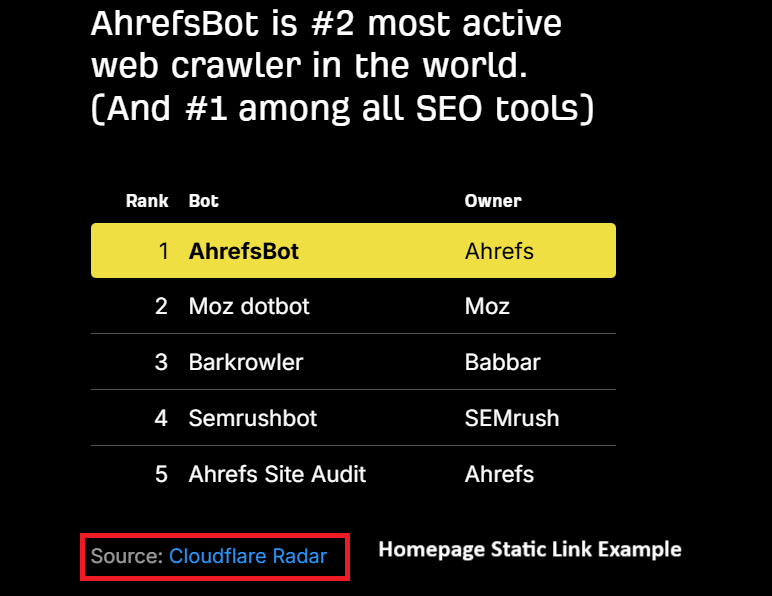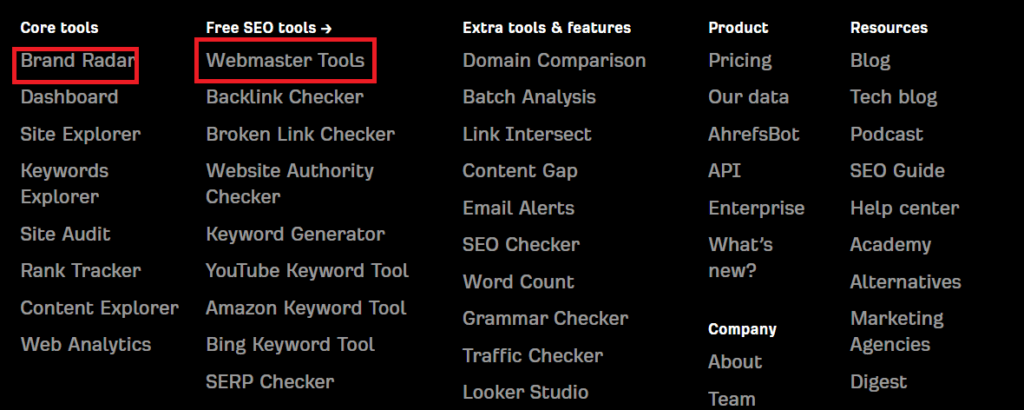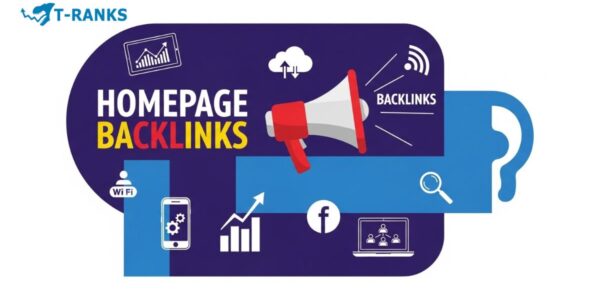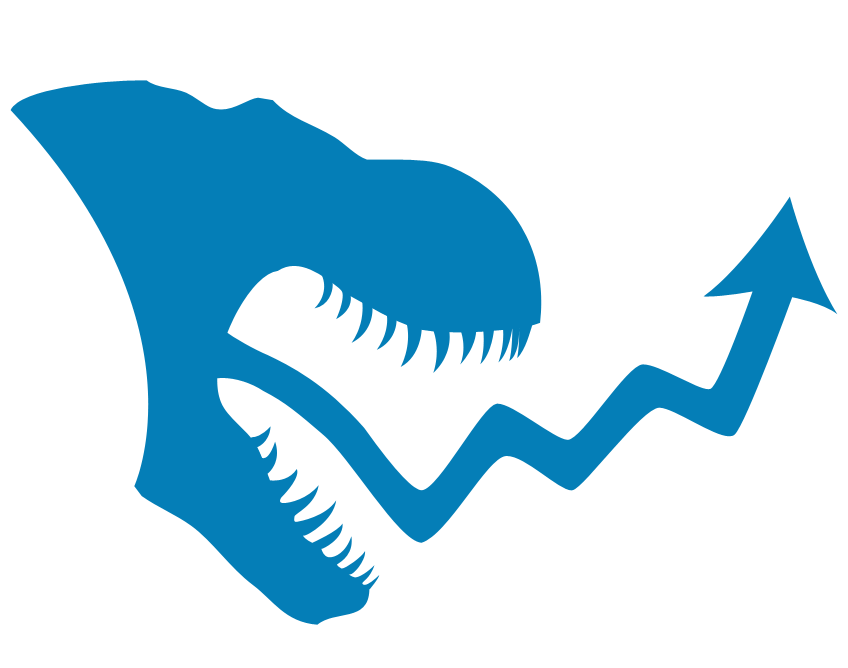If you want your website to build authority and rank higher on Google, homepage backlinks can give you a serious edge. These are permanent links placed on the main page of another website—often its most powerful and visible page.
Because homepages usually carry the strongest domain signals, a backlink from one can boost trust, improve crawl rates, and lift rankings site-wide. But not all homepage links are created equal.
If the link is relevant, naturally placed, and comes from a clean, high-authority site, it can help you grow safely. If not, it may do more harm than good.
This guide breaks down what homepage backlinks are, how they work in 2025, when to use them, and how to avoid the traps that can cost you rankings.
What Are Permanent Homepage Backlinks?
A homepage backlink is a link that appears on the main page (homepage) of another website and directs traffic to your site. When permanent, it stays live for a long period—often indefinitely—and sends strong SEO signals to search engines.
Unlike in-content links (which may get buried in blog archives), homepage backlinks remain static. They are typically found in high-visibility areas like the header, footer, or sidebar—making them one of the first elements Google crawls.
Why Homepage Links Matter
- High Authority Source: A website’s homepage usually has the highest domain authority and trust.
- Consistent Crawl Frequency: Googlebot revisits homepages more often than deeper pages.
- Visibility: These links are seen by more users, increasing referral traffic potential.
- Endorsement Signal: Getting placed on a homepage implies trust or partnership—especially when editorial.
Key Characteristics of Permanent Homepage Backlinks
- Inbound by Nature
These links originate from external sites and point back to yours, helping build domain trust and relevance in Google’s algorithm. - Homepage Placement
They reside on the homepage, often in fixed positions, and are not replaced by new content. - Long-Term Value
Unlike temporary backlinks (e.g., from rotating ads), these remain over time and continue passing link equity. - Difficult to Earn
Due to their SEO impact and visibility, homepage backlinks are often acquired through sponsorships, partnerships, or inclusion in trusted directories. - SEO Impact
A homepage backlink from a DR 60+ website can improve your entire domain’s performance—not just a single page. - Caution With PBNs
Some homepage backlinks are used in private blog networks (PBNs). These must be carefully vetted, as low-quality networks can trigger Google penalties.
Homepage vs. In-Content Links – What’s Stronger in 2025?
Homepage and in-content backlinks serve different SEO functions—and in 2025, the smartest strategy is using both in balance. Each link type passes value differently, depending on placement, context, and Google’s evolving algorithms.
✅ Homepage Links:
- Typically placed in footers, headers, or “featured on” sections
- Found on the highest-authority page of a domain
- Crawled more frequently, aiding fast indexation
- Often use branded or naked anchors (which are safer for long-term profiles)
- Ideal for improving domain-level authority and trust
✅ In-Content Links:
- Embedded naturally within blog posts or resource articles
- Surrounded by contextually relevant content
- Allow anchor text diversity and keyword-rich phrasing
- Improve page-specific keyword rankings
- Boost topical authority and internal SEO structure
Why Google Favors a Hybrid Approach in 2025
Search engine algorithms now reward natural-looking backlink profiles. If all your backlinks come from one type, it raises flags. But if your site earns homepage links for brand trust and in-content links for topic authority, it reflects a real, healthy digital footprint.
Use homepage backlinks to boost your domain’s credibility, brand signals, and crawl frequency.
Use in-content backlinks to support keyword-focused pages, product/service content, and thought leadership articles.
The SEO Impact of Sitewide vs. Static Homepage Links
In SEO, not all homepage backlinks are created equal. In 2025, Google strongly favors static homepage links over sitewide placements—especially when context and editorial relevance are clear. To understand why, we first need to define the difference.
What Is a Static Homepage Link?
A static homepage link is a backlink that appears only once on the homepage of the referring website. It does not repeat across other pages and is typically embedded in a clearly defined section, such as:
- A “Featured On” strip
- A source citation
- An editorial widget
- A homepage announcement block
These links are considered highly authoritative because they:
- Come from the most powerful page of the site (the homepage)
- Are crawled frequently
- Focus all link equity into a single signal
- Are often placed with editorial intent or informational context
Example: Static Homepage Link from Ahrefs
In the screenshot below, Ahrefs cites “Cloudflare Radar” as the data source in a homepage-only feature about top crawlers. This link to Cloudflare appears only on the homepage and is not repeated across the site.

What Is a Sitewide Link?
A sitewide link appears in the same location across every page of a website. It’s typically placed in:
- Global footers
- Sidebars
- Navigation menus
- Widgets or template elements
Sitewide links replicate across all URLs—meaning if a domain has 500 pages, your backlink appears 500 times. While this may seem like a win in volume, it can actually hurt SEO:
- Link equity is diluted across multiple instances
- Overuse of exact-match anchor text can trip spam filters
- Google may interpret it as a manipulative pattern unless marked nofollow
Example: Sitewide Link Structure on Ahrefs
In Ahrefs’ global footer, you’ll find navigation links like “Brand Radar” and “Webmaster Tools.” These appear on every single page of the website. If someone were to place a backlink here, it would be a sitewide link—duplicated across the entire site structure.

SEO Implications in 2025
| Factor | Static Homepage Link | Sitewide Link |
| Placement Scope | One-time, homepage only | Appears across every page |
| SEO Value | Concentrated link equity | Diluted authority; may trigger spam signals |
| Google’s View | Safe when editorial and relevant | Risky without nofollow; seen as template-based |
| Ideal Use Case | Brand mentions, references, source citations | Navigation, plugin credits |
| Anchor Text Best Practice | Brand or URL anchors | Branded only; avoid keyword-stuffed anchors |
Best Practices for 2025
- Prioritize static homepage links for authority building, indexing speed, and domain trust.
- Avoid placing keyword-optimized links in global footers unless they are marked rel=nofollow.
- When using sitewide links (e.g., client credits), use branded anchors and ensure they’re relevant.
Google’s Take on Homepage Backlinks in 2025
Well, there is no specific guideline provided by Google for homepage backlinks. But that doesn’t mean they go unnoticed. Google assesses all backlinks—including homepage ones—by looking at key factors like relevance, site authority, link placement, and traffic.
The homepage is like the brain or heart of a website. It’s the most visited page and often has the highest authority. Since every other page connects back to it, a homepage backlink tends to pass powerful link equity—exactly the kind of signal Google’s algorithms trust when it’s earned naturally.
What Google Favors
- Links that appear organically on the homepage—such as brand features, partner badges, or citations
- Branded or URL-based anchors that support user navigation
- Homepage links from niche-relevant, authoritative websites
According to John Mueller (Google Search Advocate), homepage links are acceptable when they make sense to users and don’t manipulate rankings.
What Google Watches Closely
Homepage links can backfire if they are:
- Bought in bulk across unrelated websites
- Using exact-match commercial anchors with no editorial context
- Found in sitewide footers or widgets on low-quality sites
- Coming from spammy domains that sell links indiscriminately
Google’s spam guidelines explicitly warn against links that are “artificial, deceptive, or intended to manipulate search rankings.”
Final Thought
Homepage backlinks still work in 2025—but only when they look natural and relevant. Focus on earning or placing them on clean, topic-relevant domains using safe anchors. If they look manipulative or mass-produced, Google will likely ignore them—or penalize your site.
When Homepage Links Trigger Penalties
Any backlink—whether it’s from a blog post or a homepage—can lead to penalties if it appears unnatural or manipulative. Homepage backlinks are not immune. In fact, because they’re highly visible and often repeated across templates, they attract extra scrutiny from Google.
In 2025, the most common homepage link practices that trigger penalties include:
- Bulk placements across irrelevant or low-authority websites
- Footer or sidebar links inserted without editorial justification
- Overuse of keyword-rich anchors like “buy backlinks fast”
- Links from spammy networks or expired domains built purely for SEO
Google’s official Link Spam Policy states that links created to manipulate search rankings are considered spam. This includes homepage links when they’re placed solely to boost PageRank without adding user value.
How to avoid issues:
- Stick with branded or URL-based anchors
- Prioritize links from trusted, niche-relevant sources
- Avoid links placed in repeatable templates like footers, widgets, or blogrolls
If your homepage backlink looks like part of a link scheme, Google will either devalue it—or penalize your site outright. Relevance and editorial context are non-negotiable in 2025.
When Homepage Backlinks Work Wonders
Homepage links are among the most powerful backlinks in SEO—when placed correctly, they can deliver sitewide ranking benefits. If you secure a homepage backlink from a highly authoritative, relevant website, the impact can be substantial.
Here’s when homepage links truly perform:
- Link From High Authority Domains
A homepage backlink from a site with DA/DR above 50 sends a strong trust signal to Google. These links act like votes of confidence from credible sources, often resulting in improved crawlability, faster indexing, and domain-wide authority boosts. - Use Branded or Neutral Anchor Texts
Homepage links are not the place for keyword-stuffed anchors. Always use branded names or raw URLs. This keeps the link natural and avoids triggering spam filters. Google expects homepage backlinks to reflect partnerships, citations, or brand mentions—not aggressive SEO targeting. - Avoid Footer or Header Links
Footer-based homepage links were common in the past—but now they carry risk. Google may ignore or penalize them if they appear manipulative or templated. Instead, aim for editorial placements in homepage content blocks, featured partner sections, or resource widgets.
A great example is Ahrefs, which links to Cloudflare Radar from its homepage as a verified data source—relevant, contextual, and editorially placed.
- Pair With Strong Internal Linking
Homepage links are even more effective when your homepage passes equity to deeper pages. A clean internal structure ensures that the link juice flows through your site logically, helping multiple pages rank—not just the homepage.
In short, homepage backlinks work wonders when they’re natural, relevant, and placed with purpose. Focus on trust, authority, and context—not quantity.
How to Get High-Quality Permanent Homepage Backlinks
Homepage backlinks are powerful—but getting them the right way is key to earning trust and avoiding penalties. Instead of chasing bulk placements, focus on relevance, authority, and editorial integration. Below are trusted strategies that work in 2025.
1. Partner with Trusted Directories and Niche Portals
Industry-specific directories often showcase top-rated services directly on their homepage, offering branded, editorial-style backlinks.
A perfect example is Capterra.com, one of the most trusted software review platforms.
If your tool or service gets featured there—like Monday.com, Jira, or Adobe Workfront—it earns a permanent homepage backlink under “Top Viewed Software.”
These links are not only highly visible but contextually relevant, making them extremely valuable in Google’s eyes.
2) Earn Placement Through Sponsorships and Collaborations
Another method is through homepage sponsorships. You can collaborate with blogs, SaaS tools, or event sites that list sponsor logos and links on their main page.
See the example:
MongoDB earned a homepage backlink on CSS-Tricks through a clearly labeled sponsorship box. The link is visible directly on the homepage and reinforces brand authority.
These links often appear under banners like “Supported by” or “Our Partners.” As long as they’re contextually relevant and not keyword-stuffed, they send strong authority signals to Google.
3. Use Aged Homepage Networks Like T-RANKS
If you’re finding it difficult to outreach at scale or secure homepage backlinks manually, you’re not alone. Building high-quality, permanent homepage links can be time-consuming—and most sites won’t entertain unsolicited link requests.
That’s where we come in.
At T-RANKS, we provide access to a vetted homepage backlink network made up of aged, high-authority domains across various niches. Every domain is manually reviewed for:
- Clean backlink history
- Natural traffic signals
- Niche relevance
- Safe hosting and CMS profiles
Unlike risky PBNs, our network avoids any spammy patterns or interlinking footprints. We use branded or URL-based anchors to ensure your links stay compliant with Google’s guidelines—while still passing strong homepage equity.
If you’re serious about ranking and want homepage backlinks that actually move the needle, T-RANKS offers a safe, scalable solution.
👉 Get in touch with us at T-RANKS.com to explore permanent homepage placement options tailored to your niche.
4)Turn Testimonials Into Homepage Mentions
Vendors and software companies often feature testimonials from real users—sometimes right on their homepage. This is an easy win if you’re a paying customer or power user.
Reach out with a strong quote, your name, and request a brand-linked mention. It feels authentic and often gets approved without much effort.
5) Build Linkable Tools and Assets
If you offer a tool, calculator, or original dataset, some websites may feature it in their homepage “Resources” or “Tools We Recommend” sections. These are rare but long-lasting links—especially effective when picked up by industry blogs or resource curation sites.
For example, look at the free tool Anchor text generator we provided at T ranks designed to help users effortlessly create optimized anchor texts for their backlinks.“
How to Vet Sites for Homepage Link Placement
Before placing a homepage backlink, you need to carefully assess the quality of the referring site. A poor-quality homepage link can do more harm than good—triggering algorithmic devaluation or even manual action. Below are the key checks to follow in 2025:
1. Ensure Niche Relevance
Always start with topical alignment.
If your website focuses on marketing, placing a link on a site about pet care or gambling will dilute SEO relevance. Google heavily favors links that appear naturally within a related ecosystem.
👉 Ask yourself: Would this site logically mention my brand or business?
2. Analyze Core SEO Metrics
Use tools like Ahrefs, Semrush, or Moz to evaluate:
- Domain Rating (DR) or Domain Authority (DA) – Aim for DR 30+
- Referring Domains – Should be consistent, not inflated with spam
- Spam Score or Toxicity – Avoid anything flagged by tools
Check the backlink profile too: does it show a healthy mix of anchors, sources, and link types?
3. Inspect the Homepage Directly
Visit the homepage and manually review:
- Are there 10+ unrelated outbound links?
- Are homepage links crammed into sidebars or footers without context?
- Does the page look curated, or like a link farm?
A well-maintained homepage will include editorial blocks, not mass placements.
4. Verify Organic Traffic and Indexing
No traffic = no SEO value.
Use SimilarWeb or Semrush to check monthly traffic. Also, run a site:example.com search on Google to confirm the homepage (and site) is indexed. If it’s missing, that’s a red flag.
5. Look for Editorial Placement Signals
Safe homepage backlinks typically appear under:
- “Featured In” or “Our Partners” sections
- “Trusted By” or “Client Logos”
- Manually added recommendation blocks
Avoid sites where links appear in every page template (sitewide) or rotate automatically. These are patterns Google’s spam team actively monitors.
Final Checklist Before You Place a Homepage Link:
✅ Niche-relevant
✅ DR/DA 30+ with clean backlink profile
✅ Human-curated homepage with limited outbound links
✅ Indexed and receiving steady organic traffic
✅ Anchor text is branded or neutral (never keyword-stuffed)
Avoid: Blogroll-style link farms, auto-generated widgets, or any homepage selling bulk “SEO backlinks.”
When to Use Homepage Links—and When to Avoid Them
Not every homepage link is valuable. The difference between a boost and a penalty often comes down to context, placement, and anchor strategy. Here’s when these links help—and when they hurt.
When Homepage Links Make Sense
- Launching a New Site
These links help Google discover and index your domain faster.
Example: A new SaaS tool earns a homepage mention from a tech incubator. - Building Brand Trust
Homepage links from relevant high-authority sites send powerful trust signals.
Example: Your brand gets listed in the “Partners” block of an industry association. - Boosting Local SEO
Local chambers or city directories often link to businesses from their homepage.
Example: A local bakery listed on the city’s official business portal homepage. - Sponsorship & Editorial Mentions
If you support a tool, event, or platform, homepage links can be a natural reward.
Example: MongoDB featured on CSS-Tricks homepage as a tech sponsor. - Placement in Niche Directories
If your service fits the theme of the homepage, the link brings relevance and authority.
Example: A grammar checker listed under “Top Tools” on an EdTech homepage.
When to Avoid Homepage Links
- Pointing to Low-Value Pages
Linking to affiliate pages or thin content looks manipulative.
Avoid: Homepage link to a coupon site or product landing page. - Using Keyword-Stuffed Anchors
Exact-match keywords raise red flags.
Avoid: Linking with anchor like “best SEO agency in New York.” - Irrelevant Linking Domains
If the topic doesn’t match, the link appears unnatural.
Avoid: Marketing tool linked from a pet blog homepage. - Sitewide Footer or Template Links
These links appear on every page and can look spammy.
Avoid: Bulk homepage links injected into the site’s footer. - Mass Link Schemes or Link Networks
Avoid links from sites that clearly sell bulk homepage backlinks.
Avoid: Sites listing 50+ random brand links with no context.
Final Tip:
Homepage backlinks work best when earned—not placed. Focus on branded anchors, niche relevance, and editorial integration. That’s what Google rewards—and that’s what delivers long-term SEO gains.
T-RANKS Homepage Link Network – Built for Safety & Power
Securing safe and effective homepage backlinks can be challenging—especially at scale. That’s where the T-RANKS homepage link network comes in.
We offer permanent homepage placements from aged, niche-relevant domains that are manually vetted and free from spam footprints. These aren’t random PBNs or templated networks—they’re clean, reliable sources designed for long-term SEO impact.
If manual outreach feels slow or uncertain, our solution offers a faster path—with full transparency and control.
👉 See real gains with homepage links that work.
Explore options at T-RANKS.com
Key Features of T-RANKS Homepage Links
- Aged domains with established trust
- Minimum DR 40+ authority
- Manual review and approval of each domain
- Clean backlink history—no penalties or spam
- Hosted across unique servers and CMS setups
- Permanent homepage placement with no removals
- Safe anchor usage—branded or generic only
- Niche-matching (e.g., health, SaaS, finance, local)
These links are designed to support your SEO strategy—not harm it.Whether you’re launching a new domain or strengthening an established site, homepage links from T-RANKS can help. They deliver clean, measurable results.
Final Verdict: Are Homepage Links Still Worth It in 2025?
In conclusion, homepage backlinks remain a powerful SEO tool—when used with precision and intent. They help pass strong domain authority, improve crawl frequency, and accelerate indexing, especially for new or brand-focused websites.
Their impact is strongest when the link is placed on a relevant, authoritative site using branded or neutral anchors. But careless usage—like keyword stuffing, irrelevant domains, or mass footer links—can trigger penalties or render the links ineffective.
To get the most from homepage backlinks, combine them with contextual placements, strong internal linking, and clean anchor strategies. Relevance, trust, and editorial value remain the key drivers of success.
Need homepage backlinks that are safe, permanent, and niche-aligned?
Explore T-RANKS Homepage Link Network and get started today.
FAQs About Homepage Backlinks
What is a permanent homepage backlink?
It’s a hyperlink placed on a website’s main page—usually in a header, footer, sidebar, or featured block—that remains live for an extended period or indefinitely.
Are homepage backlinks good for SEO in 2025?
Yes, if they’re from relevant, high-authority sites with clean backlink profiles. These links help improve crawl frequency, domain trust, and overall visibility.
Can Google penalize you for homepage backlinks?
Not for the link type itself—but if the link appears unnatural, irrelevant, or is part of a manipulative pattern (e.g., keyword-stuffed anchors, sitewide footers), it may be devalued or penalized.
How do homepage links compare to contextual links?
Homepage links are stronger for domain-wide authority. Contextual links, embedded within content, provide better topical relevance. Using both in a balanced strategy gives the best results.
Where can I buy safe homepage backlinks?
From trusted providers like T-RANKS, which offer manually reviewed, aged domains with niche relevance and clean placement practices.
How long do homepage backlinks typically last?
They can remain live indefinitely—especially when placed on stable domains or through reputable providers. There’s no set expiration unless the site is changed or deindexed.
Who benefits the most from homepage links?
New websites, startups, local businesses, and brand-driven platforms aiming to increase domain authority, accelerate indexing, and establish trust signals.

